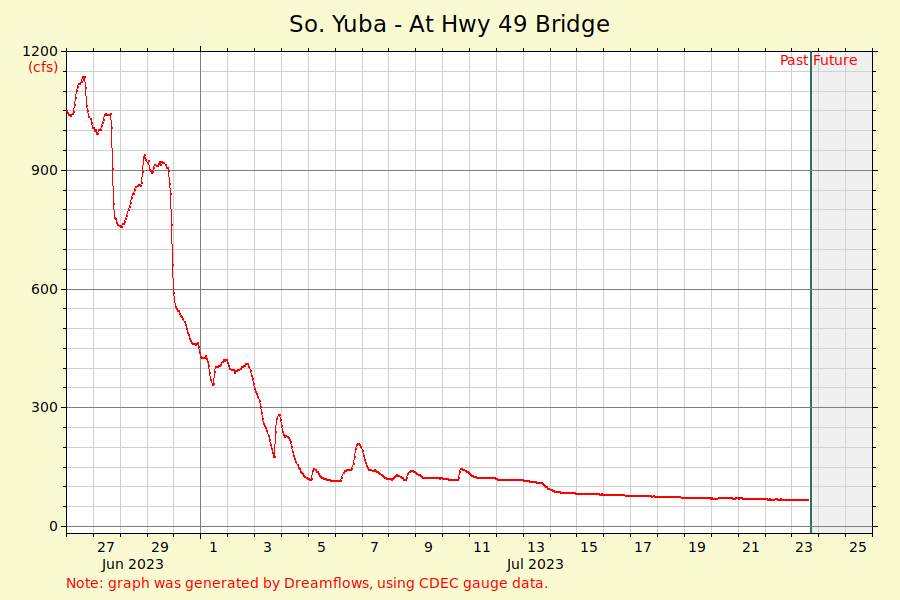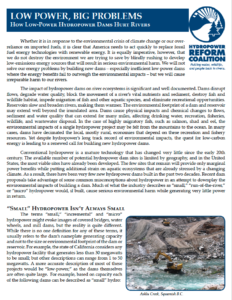Understanding the Rhythms of Rivers: Exploring Natural Hydrographs and the Impact of Dams on Watersheds
Dams create a number of issues for the overall health of a watershed. One of the primary issues is that they modify the volume (discharge) and timing of when and how water flows in the portion of the river downstream. Dams trap and store water in the wet periods of time, and then release additional water during the dry, hot periods of time to meet human need.
The graph which shows the amount of water flowing past a point over time is called a hydrograph. There are no specific guidelines for how much time a hydrograph has to represent. They can be for a single storm, a calendar year, a water year (October 1 through September 30), or for the entire period that records at that location have been kept.
The portion of a hydrograph where the discharge is increasing is called the rising limb, the highest point on the hydrograph is called the peak, and the portion of the hydrograph where discharge is dropping is called the falling limb. Depending on the period represented, this pattern of rising limb, peak, and falling limb can happen multiple times. In natural, snowmelt dominated systems, like the gage on the North Yuba at Goodyear Bar, we see a rising limb, peak, and falling limb every 24 hours. This is called a diurnal. The snow melts during the day and works its way into the river. The discharge peaks in the middle of the night, and the discharge drops back down.
There are a number of characteristics to a natural hydrograph. A diurnal pattern can be one. Another important characteristic is that the falling limb especially is gradual. In a system controlled by dams, operators will release water for power generation, water demands, legal requirements, and in the Spring to make room for melting snow. When water is being released to make room for snow melt, dam operators’ goal is to release enough water to have a full reservoir once all the snow has melted. As soon as they feel that they have enough water storage in the reservoir to capture remaining snow melt, they will “turn down” the river below the dam and release as little water as possible. When it comes to dam operations, this is called the ramping rate.
The two pictures show the hydrograph for the end of June and most of July 2023 for the North and South Yuba, respectively. In the North Yuba, we can see the diurnal pattern of daily changes in discharge with a slow decrease in discharge over the entire period. In the South Yuba graph, we see a similar diurnal pattern for the first couple of days in the graph. But on June 29th, operators start “turning the river off” and a few days later, on July 4th the river is at low summer flows.
The rate at which discharge in a river drops – that is the length of the falling limb of the hydrograph – plays an important role in a number of natural processes. A slow ramping rate gives juvenile salmon the signal to move off of floodplains so that they do not get stranded as flows recede. It also allows vegetation recruitment to be more successful because willows and other species have time for roots to develop as the water drops. The lifecycle of bugs and other creatures are also tied to a slow falling limb. When it drops too quickly, plants and animals that need water cannot move or grow fast enough to keep pace with the dropping river levels. In addition to the falling limb, trapping water behind dams during the wet season means that the peak of the hydrograph is “cut off” and stored in the reservoir. This means that water does not flow downstream inundating floodplains, which creates nutrient rich habitat for juvenile salmonids to feed and grow in.
The Yuba River watershed is home to multiple listed species of fish included in the Endangered Species Act (ESA) – including spring-run Chinook salmon(state and federally listed as threatened), fall-run Chinook salmon(federally listed as a species of concern), California Central Valley steelhead (federally listed as threatened), and green sturgeon (listed as threatened on the federal level in the Central Valley). For these fish, the most important dam is Englebright Dam as this is the dam that controls the hydrology of the lower Yuba River
Regulating flow requirements downstream of hydropower dams is controlled by the Federal Energy Regulatory Commission (FERC) which will update hydropower licenses every 30-50 years. Between these relicensing periods, voluntary agreements or other negotiations may occur between dam operators and state and federal agencies.
In the Yuba, these negotiations are occurring right now and include the on-going plans for the Nature-like Fish byway at Daguerre Point Dam and salmon reintroduction studies in the North Yuba.
SYRCL is involved in meetings and planning to make sure the reintroduction study provides valuable information that can be used to advocate for the recovery of Chinook salmon. We have also been invited to participate in some of the Nature-like Fish byway meetings to discuss the technical challenges of that project.
The FERC relicensing process has also been taking place over the last few years for a number of hydropower projects in the Yuba Watershed. This process is typically long and complex with environmental advocates, regulators, and agencies all communicating through formal letters.
SYRCL is tracking and critiquing all communications and working with our environmental partners to ensure that natural ramping rates are required, that winter pulse flows are released, and that the full environmental impact of all dam operations are considered cumulatively rather than individually.
This post originally appeared on SYRCL.




